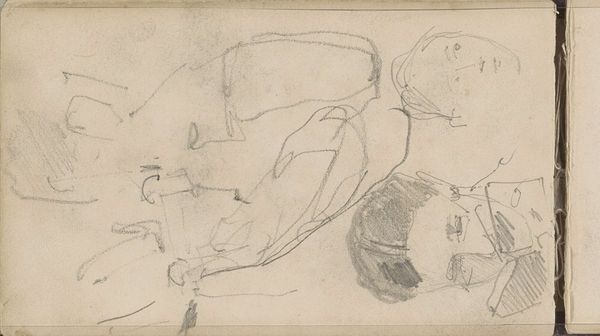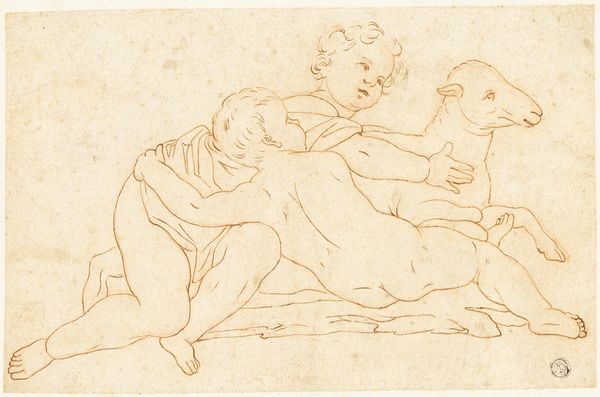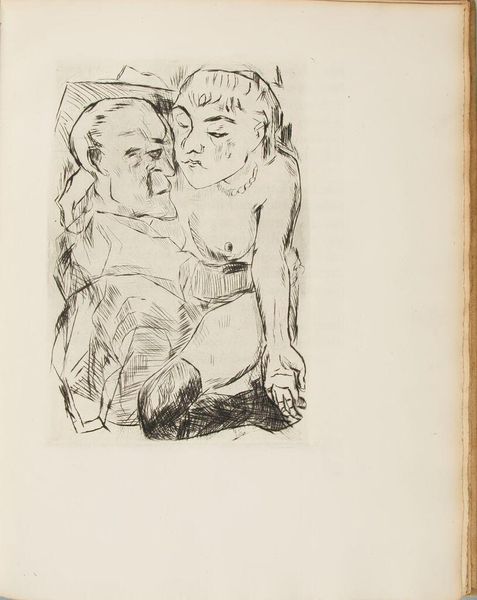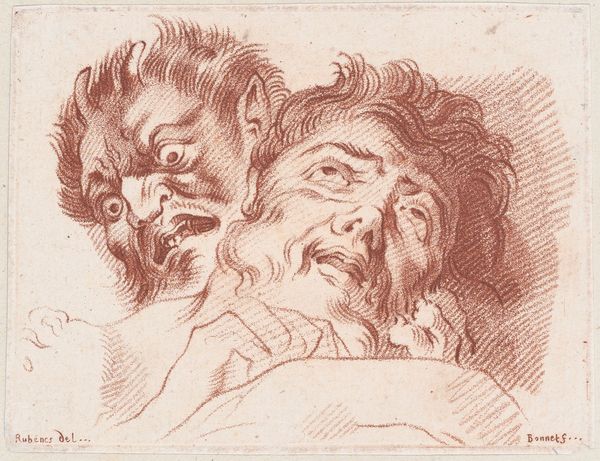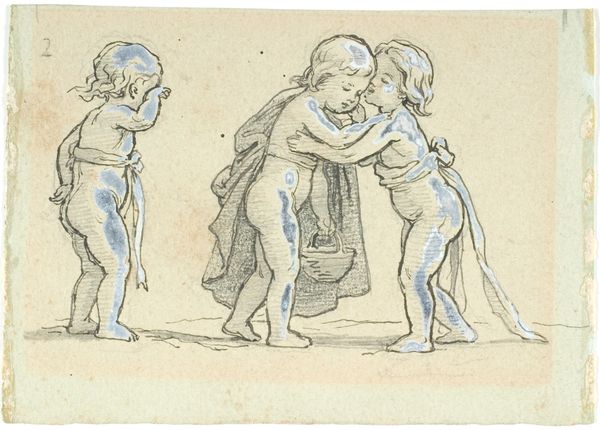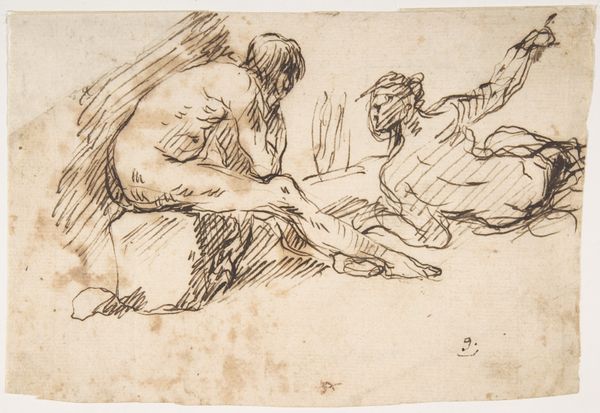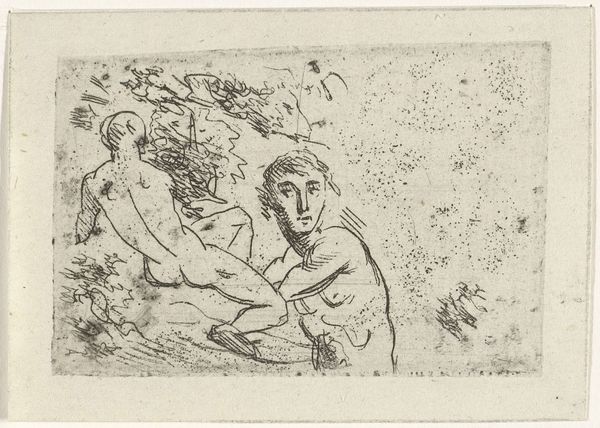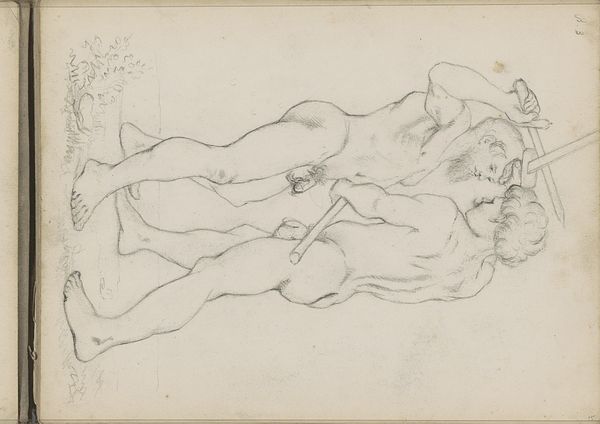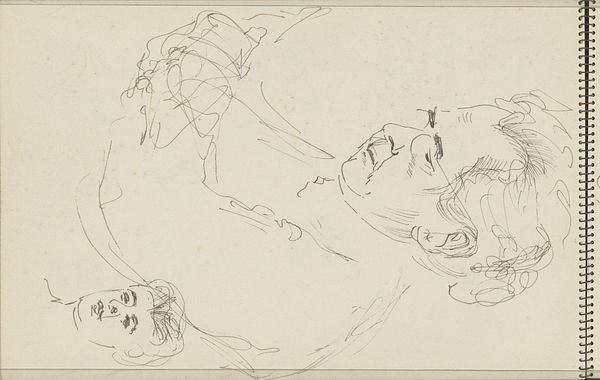
drawing, pencil
#
portrait
#
drawing
#
new-objectivity
#
pencil sketch
#
german-expressionism
#
figuration
#
pencil
#
expressionism
#
portrait drawing
#
nude
Dimensions: overall: 47 x 59.4 cm (18 1/2 x 23 3/8 in.)
Copyright: National Gallery of Art: CC0 1.0
Otto Dix created this charcoal drawing, "Zwei Weiber," or "Two Women," in 1923. Dix was a trench artist in the First World War and part of the 'Neue Sachlichkeit' or 'New Objectivity' movement in Germany, so his works often aimed to satirize his social context. Here, two women are seen up close. The visual codes employed by Dix in this work were meant to criticize the superficiality of the art world, and even broader society. The artist created this drawing during the Weimar Republic, a time of economic collapse, hyperinflation, political polarization, and decadent nightclubs. The drawing may be a reference to the growing visibility of queer culture in Weimar Berlin, but it has also been read as a critique of both prostitution and exploitative sexual relationships. Historians look at artworks like these as part of a complex web of institutional, social, and economic change. By studying archives, periodicals, and government publications, we are better able to interpret the role of art as a document of its time.
Comments
No comments
Be the first to comment and join the conversation on the ultimate creative platform.
